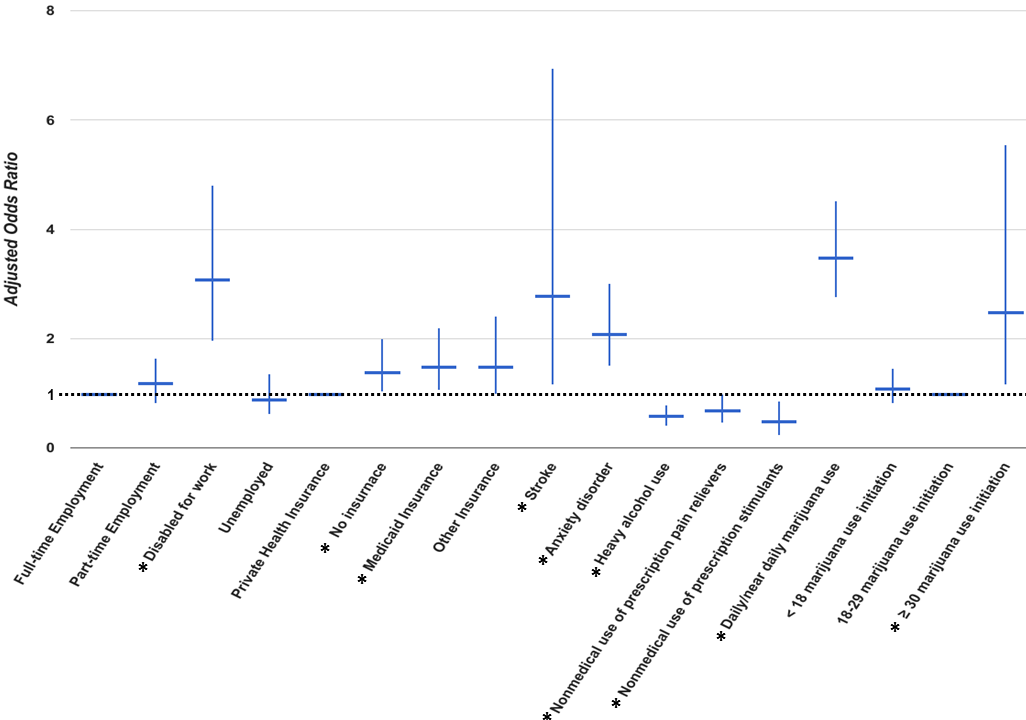STASH, Vol. 13(2) – Who is using medical marijuana and how do they compare to recreational users?
More than half of the U.S. states and territories have laws permitting medical use of marijuana. Knowing who is using medical marijuana can inform efforts to reduce the potential harms. This week STASH reviews research from Dr. Wilson Compton and his colleagues published in JAMA that explores medical marijuana use among US adults.
What was the research question?
Are medical marijuana users distinctly different from non-medical marijuana users?
What did the researchers do?
The researchers analyzed data, including demographics, substance use, health issues, and topics related to medical marijuana from the 2013-14 National Survey on Drug Use and Health. They used multinomial logistic regression to compare medical marijuana users to non-medical marijuana users.
What did they find?
Compton and his colleagues found that approximately 13% of US adults used marijuana during the past year. Most (about 12%) were non-medical users. About 1% used for medical purposes only, and less than 1% used for both medical and nonmedical reasons. As Figure 1 shows, compared to non-medical users, medical users were more likely to be disabled for work, had no or state-funded health insurance, were more likely to have had a stroke or anxiety disorder, less likely to use prescription pain relievers or stimulants non-medically, and less likely to be heavy alcohol users. Medical marijuana users were more likely to use marijuana daily and less likely to initiate marijuana use at a younger age.

Figure. Comparison of characteristics of US adults with past year medical marijuana use only compared to those with nonmedical marijuana use only. Click image to enlarge. Note. * indicates findings with statistical significance. The horizontal bar is the adjusted odds ratio and the vertical line is the confidence interval. Click image to enlarge.
Why do these findings matter?
New treatment options such as medical marijuana have the potential to alleviate some health conditions. These findings indicate that those who use medical marijuana were more likely to be disabled and to have significant physical and mental health conditions than recreational users. Like any new medicine, there is the potential for for unintended consequences. In this case, those unintended consequences were positive, as medical marijuana users were less likely to misuse other drugs or alcohol. And they were more likely to initiate their marijuana use after the brain has fully developed reducing the possibilities for harm and misuse.
Every study has limitations. What are the limitations in this study?
The cross-sectional data used in this study makes it impossible to identify temporal relationships between medical marijuana use and the demographic and health characteristics discussed in this study. In addition, the study relies on self-report data and had a 59% response rate, which makes interpreting the results more challenging. Future studies about medical marijuana use might improve on this study by following a group of US adults forward in time and include additional measures about medical marijuana use.
For more information:
If you are concerned about yours or a loved one’s substance use, visit our resource page for brief screens to assess substance use and self-help tools.
— John H. Kleschinsky
What do you think? Please use the comment link below to provide feedback on this article.